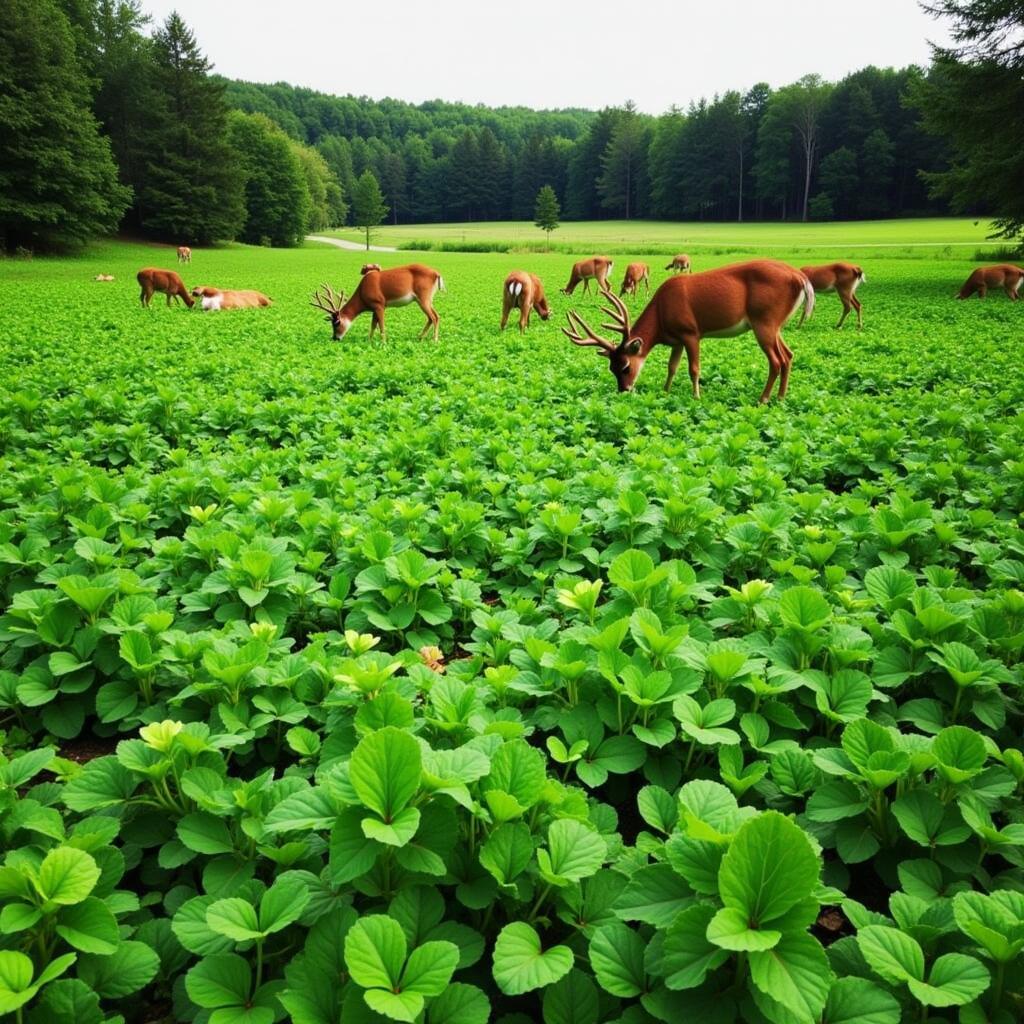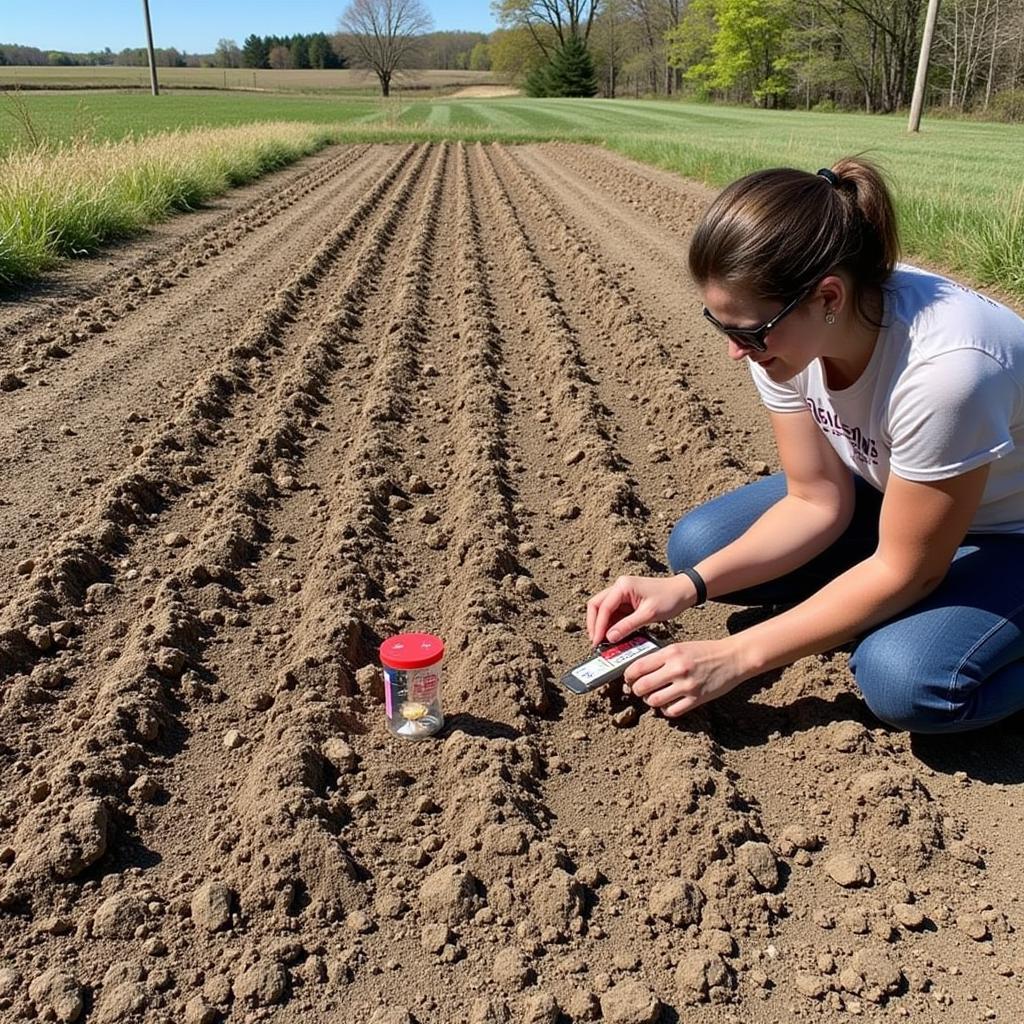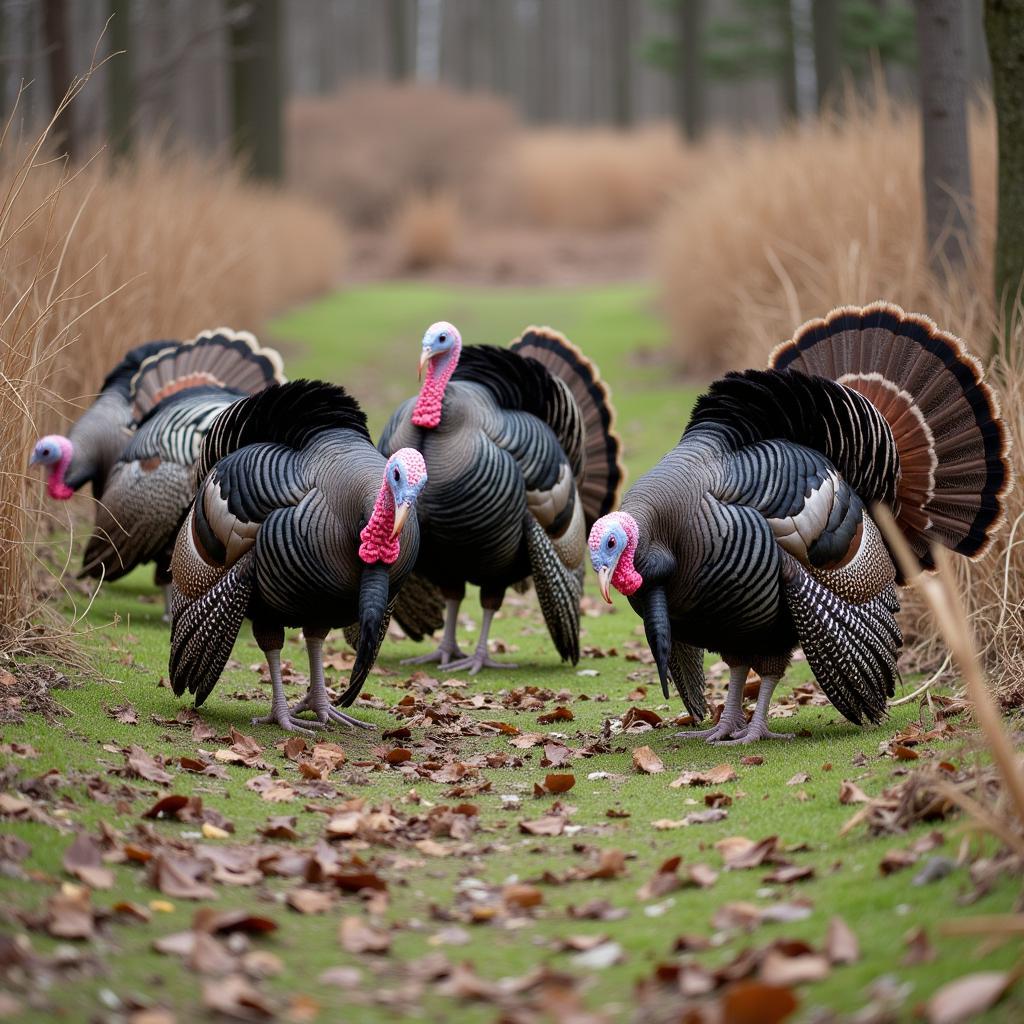A 1/4 acre food plot might seem small, but with careful planning and execution, it can become a thriving wildlife haven. This guide will explore how to maximize your small food plot for optimal results, from selecting the right plants to maintaining a healthy growing environment. We’ll cover everything you need to know to create a successful 1/4 acre food plot that attracts and nourishes local wildlife.
Planning Your 1/4 Acre Food Plot for Success
Before you even think about planting, a well-structured plan is essential for your 1/4 acre food plot. Consider your local wildlife. Are you aiming to attract deer, turkey, or other animals? 1/4 acre food plot planning should always start with identifying your target species. This will influence your choice of plants. Understanding your soil type and conducting a soil test are also crucial. This information will guide your fertilizer and amendment choices, ensuring optimal growing conditions. Finally, consider the sunlight exposure in your chosen area. Different plants require varying amounts of sunlight, and selecting varieties suited to your plot’s specific light conditions will maximize growth.
Selecting the Right Plants for Your 1/4 Acre Food Plot
Choosing the right plants is the cornerstone of a productive 1/4 acre food plot. Consider planting food plot radishes for early-season attraction. These fast-growing brassicas provide valuable forage during the early months. Clover is another excellent option, providing long-lasting nutrition throughout the year. For a fall attraction, consider rye grain food plots. Rye is a hardy grain that can withstand cold temperatures and provides valuable forage during the winter months.
 Deer Grazing in a Clover Food Plot
Deer Grazing in a Clover Food Plot
Preparing and Planting Your 1/4 Acre Food Plot
Once you’ve selected your seeds, the next step is preparing the land. This typically involves clearing existing vegetation, tilling the soil to create a seedbed, and applying any necessary fertilizer or soil amendments. Planting methods can vary depending on the chosen plants. Some seeds can be broadcast spread, while others may require drilling for optimal germination. Remember to follow the specific planting instructions for each seed type.
Ensuring Proper Soil Health for a Thriving Food Plot
Maintaining proper soil health is essential for a thriving food plot. Regular soil testing can help monitor nutrient levels and identify any deficiencies. Consider using lime or other soil amendments as needed to maintain optimal pH levels. Proper drainage is also crucial, as waterlogged soil can hinder plant growth.
Maintaining Your 1/4 Acre Food Plot
Maintaining your 1/4 acre food plot requires ongoing attention. Regular weeding will help reduce competition for resources, while watering during dry periods can prevent stress on your plants. Consider cutting back certain plants, like clover. Knowing when to cut clover food plots is crucial for stimulating new growth and maximizing its nutritional value. This practice also helps control weeds and encourages thicker stands.
 Testing Soil in a Small Food Plot
Testing Soil in a Small Food Plot
Attracting Wildlife to Your Food Plot
Strategically placing your food plot can enhance its attractiveness to wildlife. Choose areas near existing travel corridors or bedding areas. Providing a water source near the food plot can further increase its appeal. Creating a mix of plant types can also draw in a wider variety of wildlife.
Conclusion
Maximizing a 1/4 acre food plot is achievable with the right approach. By carefully selecting plants suited to your local environment and wildlife, preparing the land effectively, and implementing a consistent maintenance plan, you can create a thriving food plot that provides valuable forage for local animals. Remember, even a small plot can make a big difference in supporting a healthy wildlife population.
 Wild Turkeys Foraging in a Food Plot
Wild Turkeys Foraging in a Food Plot
Planning your planting schedule is also essential, particularly for game birds like turkeys. Understanding when to plant turkey food plots will ensure that food is available when they need it most. A well-managed 1/4 acre food plot can be a rewarding project, providing both satisfaction and a valuable contribution to the local ecosystem.
FAQ
-
What is the best plant for a 1/4 acre food plot? The best plant depends on your target species and local climate, but clover is a versatile and popular choice.
-
How often should I fertilize my food plot? Regular soil testing is recommended to determine the appropriate fertilization schedule.
-
Can I plant a food plot in a shady area? Yes, but choose shade-tolerant plant varieties.
-
How do I control weeds in my food plot? Regular weeding, proper planting techniques, and sometimes herbicides can help control weeds.
-
What is the best time to plant a food plot? This depends on the specific plant species and your local climate.
Common Food Plot Challenges
-
Deer Overgrazing: This can be mitigated by rotating food plots and implementing planting strategies that encourage rapid regrowth.
-
Weed Competition: Proper soil preparation and targeted weed control methods are essential.
-
Poor Soil Conditions: Regular soil testing and amendment applications can help improve soil health.
Further Resources
-
Check our article on deer-resistant plants for food plots.
-
Learn more about attracting specific wildlife species to your plot.
Contact Us
For further assistance, please contact us: Phone: 02437655121, Email: minacones@gmail.com or visit us at: 3PGH+8R9, ĐT70A, thôn Trung, Bắc Từ Liêm, Hà Nội, Việt Nam. We have a 24/7 customer support team ready to help.